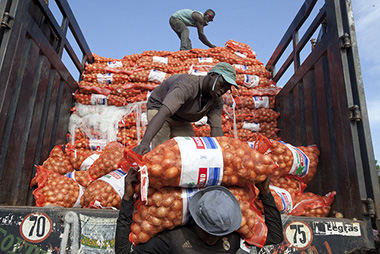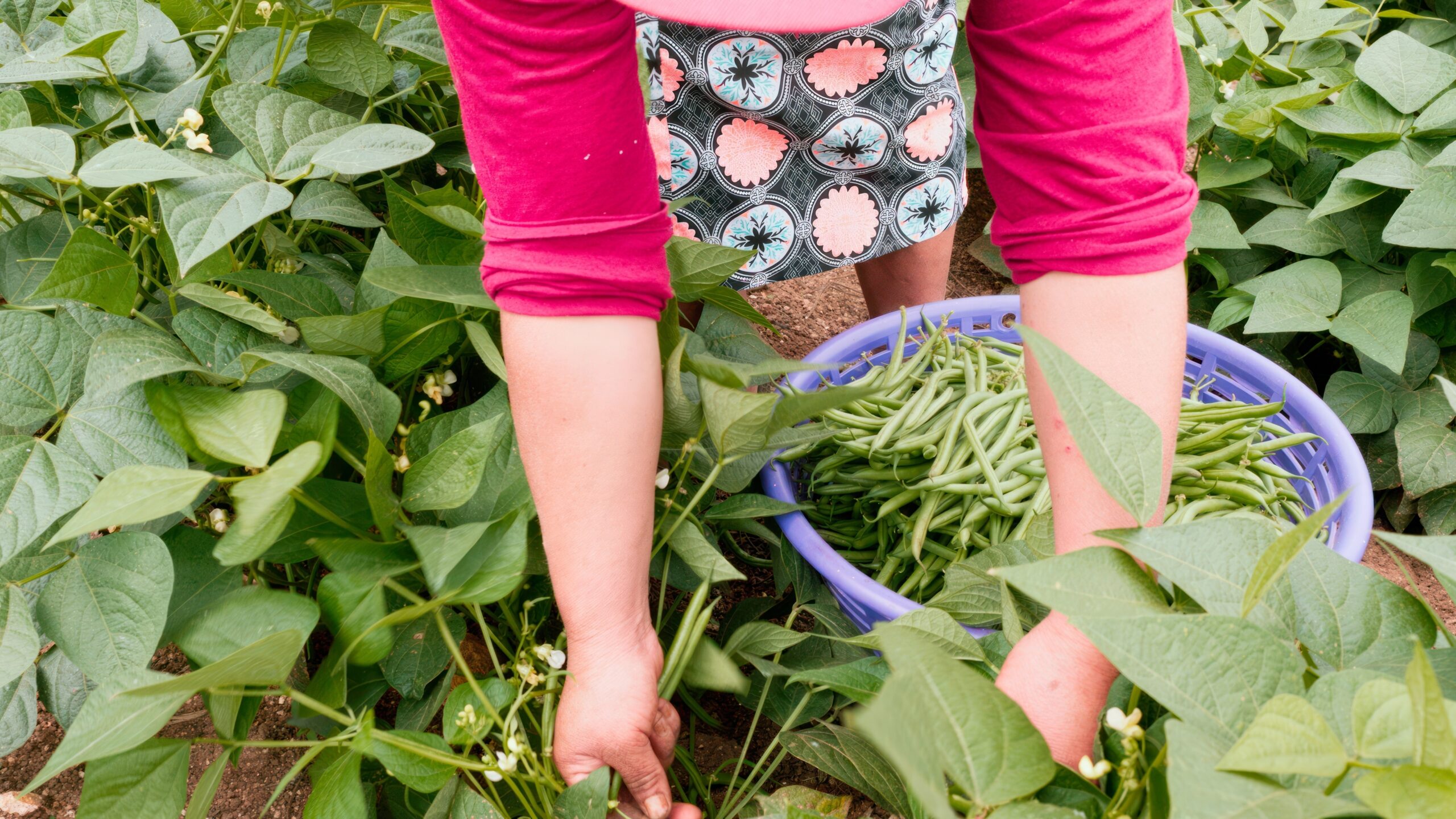The following post by former IFPRI senior researcher Alberto Valdés is part of an ongoing series of blog stories celebrating IFPRI’s 40th anniversary. Each story authored by current and former IFPRI research staff highlights a key research topic through the years from the personal perspective of the researcher.
Should developing countries return their policy focus to protecting domestic industry, assuming the agricultural sector will go largely unaffected? The short answer, of course, is no. A longer answer invites delving into a little history of the evolution of the policy bias against agriculture. The following is a short synopsis of the past forty years: of evolving theories, evidence, and policies in which IFPRI has played a supporting role in favor of reducing this bias.
Following the disruptions of world trade during the protectionist 1930s, World War II, and independence from colonial powers, domestic industry was the darling of development policies for many low-income countries. In part the argument for industrial protection took for granted that agriculture was unresponsive to price incentives, and many economists believed that the domestic economies would sacrifice little in terms of economic growth, if they diverted resources – such as capital and labor – from farming to other activities. Moreover, agricultural taxes were easy to administer and viewed as an attractive policy option in countries with a thin tax base. Meanwhile, shifting resources to industry often was thought to be justified by agriculture’s declining terms of trade over the long term. By the 1980s, however, some experts began to call into question this conventional wisdom.
This shift in thinking proved fundamental toward contributing to our current understanding of the need to reduce distortions to agricultural incentives around the world. The research findings at the time started to illustrate that farmers were not so insensitive to prices and other incentives after all. It became apparent that the farmers’ investment and production decisions were not merely a question of domestic and world prices for farm products alone, but also were the result of shifts in relative incentives between the farm sector and the rest of the economy. In short, protecting domestic industries via an import tax was shown to have the same damaging effect on the export sector as imposing an export tax. This “implicit taxation” of the export sector due to the explicit protection of import-competing sectors did not generate any government revenue, but was made effective by higher input costs and reduced relative prices of domestic farm products. To make matters worse for farmers, often there were even explicit taxes on agricultural exports, too.
There also were major conceptual developments in macroeconomics during the 1970s and 1980s that helped shift how such policies were viewed. In short, a much better understanding of the determinants and the influence of exchange rates was developing at this time, particularly in regard to the impact of exchange rate misalignment on agricultural incentives. IFPRI played a significant role in taking this improved understanding of the way real economies work and putting it into practice in advancing policies applied to agriculture in developing countries. Given the importance of farm and food prices for agricultural sector investment and growth and—more importantly—for the poor (often farmers as well), a key objective of IFPRI´s Trade and Food Security Program between the late 1970s and 1990 was to raise awareness and understanding of the nature and implications of policy distortions to agricultural incentives. Moreover, suspect policy interventions existed not only in the developing world but also in many richer countries that coddled their own farm sectors, often boosting production and reducing world prices to the detriment of poorer famers. Analysts and the development community grew to accept the hypothesis that price incentives faced by farmers in most developing countries had been systematically depressed for decades.
In parallel and complementing the work on agricultural incentives, IFPRI’s Trade Program focused on two lines of research. One centered on the nature and magnitude of food insecurity in low-income countries. Studies examined short-term food supply management strategies in India, Egypt, Pakistan, Peru, Kenya, countries of the Sahel and elsewhere. The country-specific focus was supplemented with an evaluation of international policy approaches to address world price stabilization mechanisms. These approaches included international buffer stocks, food aid, and financial and insurance schemes to deal with fluctuations in the cost of food imports. Another line of research centered on foreign trade regimes, developing conceptual models and then providing quantitative estimates of the depressing influence of farm subsidies in high-income economies on world prices and the consequent impact on developing countries both as importers and exporters of farm products.
Although there was evidence at the level of individual cases and very good economic reasoning supporting the idea, the nature and extent of the policy bias against agriculture had not yet been rigorously tested until the early 1980s. Responding to this gap in evidence, the World Bank in collaboration with IFPRI sponsored a large research project, the Political Economy of Agricultural Pricing Policies, which documented price policies for 19 developing countries during the period of 1960 to 1985. The resulting data and analyses accounted for both direct policies aimed explicitly at agriculture and “indirect” policies that impacted the farm sector, such as exchange rate interventions and industrial protection. The cross-country evidence was published in the early 1990s, confirming the hypothesis that, after accounting for all relevant policies (including R&D, extension, and input subsidies for farmers), there was widespread taxation, implicit and explicit, of agriculture in developing countries. This total tax was in the order of 30 percent of farm income, with indirect taxation accounting for three-quarters of that amount. Policies did stabilize the transmission of world price shocks to domestic markets, but overall the farm economy was losing much of its potential income to the rest of the economy.
In 2009, the World Bank published a study, “Distortions to Agricultural Incentives,” which extended the period of analysis up to 2005. This research generated impressive empirical results on the levels and trends of agricultural price and trade interventions in a large number of high-income and developing countries. The study also demonstrated that developing countries had largely reformed agricultural policies starting in the late 1980s. Although with some exceptions, the anti-export bias in developing countries has lessened, primarily due to the removal of explicit export taxes but also through a reduction in protections on industrial products.
With the benefit of hindsight, we can now say that the poor have probably lost disproportionately from the bias against agriculture in the developing world. More often than not, the rural poor would have gained from removing interventions, raising rural employment and eventually real rural wages in the long term. The magnitude of both the implicit and explicit tax on agriculture reported in the World Bank and IFPRI study by Krueger, Schiff and Valdés certainly surprised policy analysts and attracted considerable attention, as did the World Bank’s subsequent study on distortions to agricultural incentives.
Since the end of the 1980s and into the early 1990s, most developing countries have been on track to phase out farm export taxation. In fact, there are some cases where import-competing agriculture now receives positive assistance. The poor have benefited from this approach, which is firmly rooted in evidence-based research.
Today, few economists would accept the hypothesis of “inelastic” agricultural supply response, which undergirded faith in import substitution. Partially influenced by research, agricultural policy issues have evolved, and more recent concerns have shifted to world price volatility, WTO negotiations, the proliferation of bilateral and sub-regional trade agreements, and the increasing influence of China in international commodity markets.
Despite this shifting paradigm, there are still calls for protection in some policy circles. Recent global commodity price spikes have fueled some countries’ growing level of concern, raising calls to do “something,” which often is translated into protectionist impulses. Yet helping support smallholder farmers in developing countries vulnerable to such shocks – and thereby raising food and nutrition security and helping countries to deal with volatility- will reduce pressures to revert to protectionist policies that discriminate against export-dependent sectors, most importantly agriculture.







